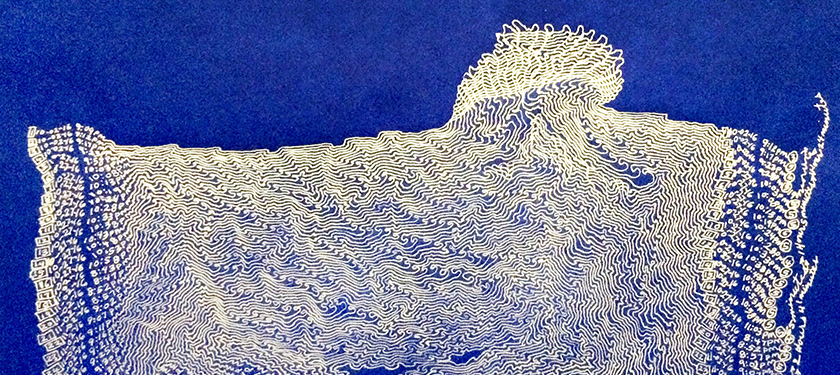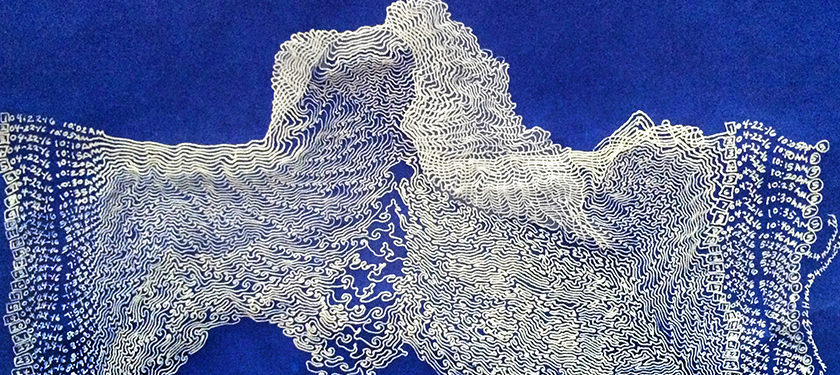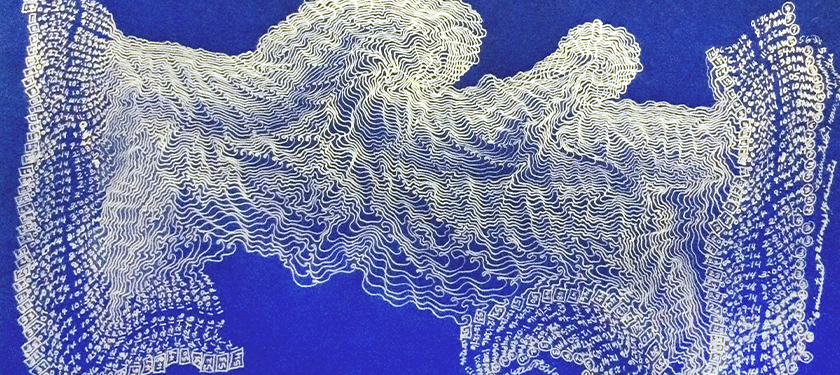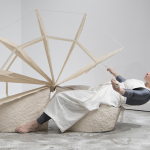Business of Art | Web Design 101 for Artists and Creatives
From accessibility tips to content best practices: here’s what you need to know before creating your website.
It doesn’t matter if you have already achieved sought-after gallery representation or if you’re an independent, emerging artist: a website of your own is a must-have for all creatives. And no, a heavy presence on social media is not enough of a substitute for this need. Having your own page is the best way to control your narrative and centralize all information about you in one place. It will also help you show up on top of searches should buyers and curators Google you (and they will!), allow you to track data about your audience, and even help you boost your own sales.
Perhaps you already know all of the good things that a website can do for you, but feel intimidated by the tech aspects of creating one. The good news is that there are a plethora of platforms and tools that can do most of the work for you with zero or minimum need for coding knowledge. Still feeling intimidated? Read the steps below before getting to work.
Planning and Building
The first thing to do before starting any new project is to set your goals. What is the main goal of your website? Do you seek to increase sales and/or visibility? Is your objective to better engage your audience? This is one of the key things that will help you choose the right website building tool for you. There’s a tool for every budget and web design expertise level, including zero. Among the most popular platforms are Squarespace, Wix, and WordPress. Create a free account with the services that offer that option and check how comfortable you are with their usability. One tip to help you decide? Start a “pros and cons” list for each platform.
One of the main advantages of choosing a website building tool is that they’ll give you access to templates (sometimes you’ll have to pay a bit extra, but there are usually free options as well) to be customized. Basic customization will often require no coding skills, but if you would like to make things a bit fancier, take a look at some basic HTML tips and CSS tips. You’ll also need to know a little bit about HTML once we get to our next topic: tracking.
Found the platform that works for you? Great! Now let’s think about content. First, you’ll need to consider a URL—for an artist, your name is the best option. This will help your page appear at the top of searches once someone Googles you. Custom URLs, like www.jondoe.com, come at a cost though, and free plans offered by website building tools won’t support them. Still, this is (not a lot of) money well spent.
You’ll also want to spend some time mapping the navigation of your website. Keep things simple and objective. Think about what pages you’d like to have (for example, one for your bio, one for your portfolio, one for press links, etc.—but not too many!) and how they’ll talk to each other. Look at them through the eyes of your audience: what would they like to see and how? A good exercise is to peruse the websites of your favorite artists and make note of what works and what doesn’t. And two last golden tips for your website mapping: users should always be able to get back to the homepage, and your contact information should always be within one click.

Content Must-Dos
As an artist, there are a few things that your audience will want to know about you right away. They are: your bio, your CV, your work, and your contact information. These are the basics. A few other things we recommend:
- A press section – if someone has written about you before, no matter how small the outlet, let your audience know!
- Prices – if your goal is to make direct sales, they really are a must. And if you think otherwise, NYFA Board Member, gallerist, and collector Michael Findlay will change your mind in this blog post (bonus: Findlay also offers tips on how to organize your artwork within your page).
- Your social media handles – you should have at least one on whichever platform works best for you; this will help you drive traffic to your page.
- A newsletter opt-in form – this doesn’t mean you’ll have to consistently email subscribers (though that’s a good marketing plan), but it’s a great way to collect contact information from potential buyers and let them know first-hand whenever you have any news to share (new work, exhibitions, press coverage, etc). You may use email marketing tools like Mailchimp and Constant Contact to manage these communications.
Data Tracking and Search Engine Optimization (SEO)
An often-overlooked advantage of creating a website for your practice/business is the ability to collect data about your audience—or at least the online portion of it. This information will come in very handy when developing marketing strategies. Access it by creating a free Google Analytics account and adding a tracking code to your website. Not sure where to start? Learn the basics here.
You’ll also want to be mindful about how your website performs when someone conducts a search for your name or business using a search engine—does it appear at the top or, at least, close to the top? There’s no need to panic if the answer is no; there are ways to improve your search performance with some very simple Search Engine Optimization (SEO) tips. And if a clean and easy to parse website is key to providing a good user experience to your audience, it becomes even more important when the subject is SEO. Keep your paragraphs short, use accessible language, and make titles and links as descriptive as possible. Also, don’t forget to check how your website looks on mobile devices.
And a Bonus Tip that Alysia Harris offered during an #ArtistHotline Guest Chat: use your website as a tool to build community, which can also help improve SEO. Add a section that directs people to folks in your creative community or other artists that inspire you. Also from an #ArtistHotline Guest Chat, Ross Barber-Smith recommends tools like sitechecker.pro and Moz to assess and improve your site’s SEO.

Design and Accessibility
There are several reasons why you should make sure your website is friendly towards people with disabilities. Reason number one being that you want your website to be accessible to everyone. Second, a website with accessibility issues might mean lost sales: you’ll be alienating a good portion of the population. Third, accessible websites are good for SEO. Basic accessibility solutions are fairly easy to implement. Here are a few you can do yourself:
- Add alt text tags describing all of your images— that means a screen reader will be able to read the description of the images for those who are visually impaired. Most website building tools will have a field for alt text tags. All you’ll have to do is to complete the field. Here are a few tips for effectively describing images.
- If your website uses video, make sure to add subtitles to it (YouTube can do it automatically for you). You should also be mindful of strobing effects and never (ever!) use autoplay.
- Your choice of colors and fonts are more important than you think. Test their legibility using a contrast checker.
- Hyperlinks are a crucial aspect for those that need screen readers to navigate a webpage. Make sure they’re very descriptive! You should also make sure they look different from all other text on the page.
With the tips above in mind, all you have to do now is work on your branding. Plan headers, color palettes, and the composition of each page in advance so they all look consistent. Let your art speak for itself by keeping your layout as clean as possible. Last but not least, proofread all of your copy several times!
Once your page is built, ask friends to take a look at the site to assess if it is easy to navigate and understand, and if its contents are an accurate representation of your purpose as an artist.
– Luiza Teixeira-Vesey, Designer/Marketing Officer
You can find more articles on arts career topics by visiting the Business of Art section of NYFA’s website. Sign up for NYFA News and receive artist resources and upcoming events straight to your inbox.





